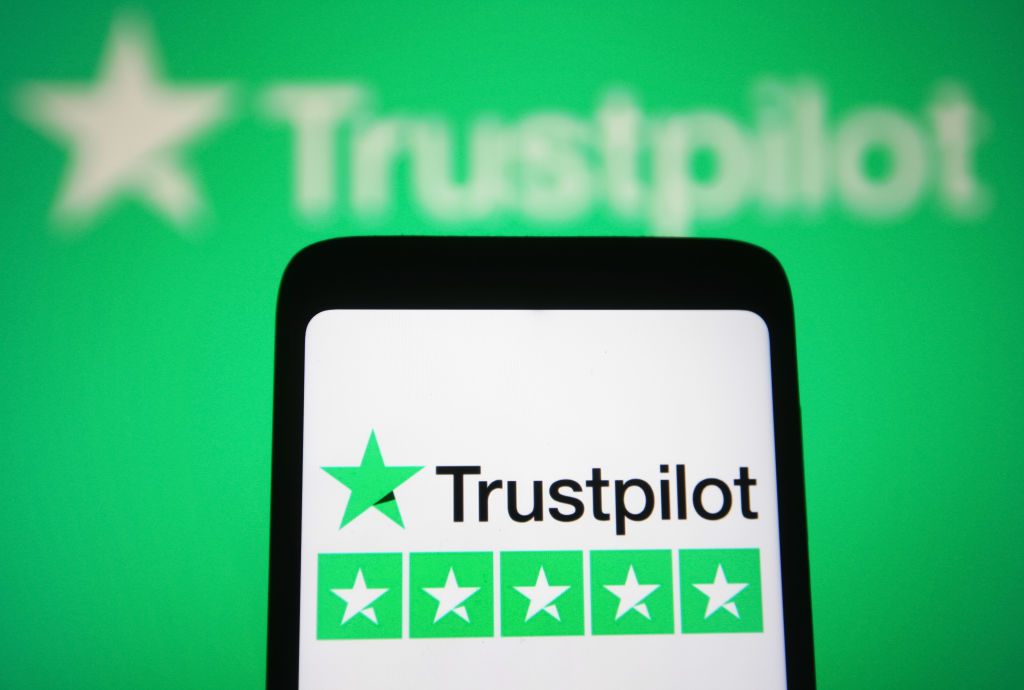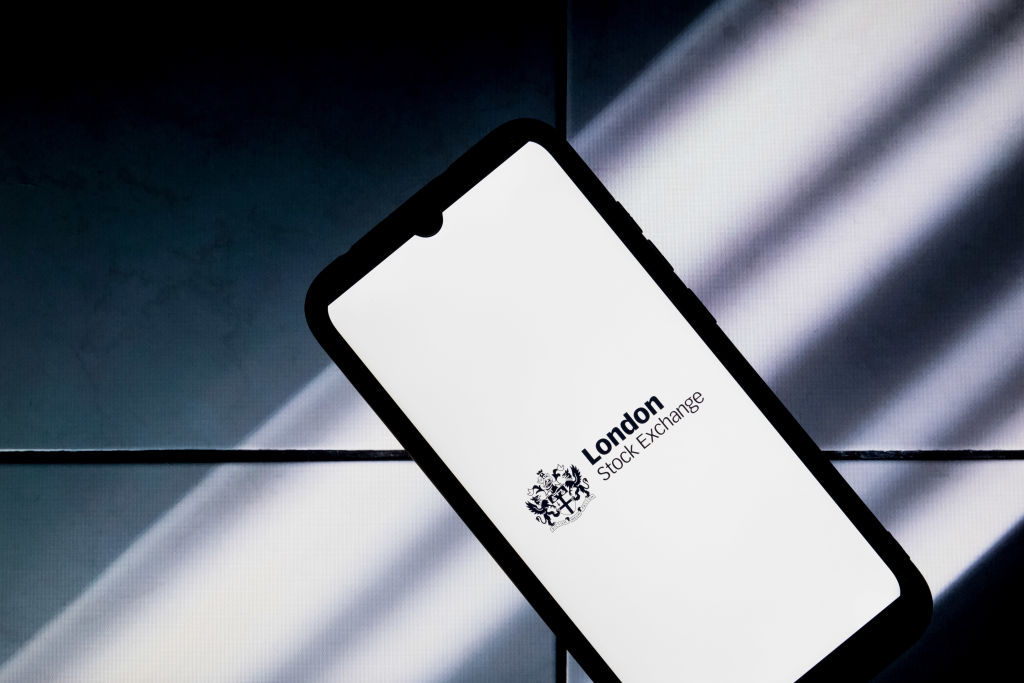Silver and platinum group metals are dirt cheap – buy now
Some of the most important precious metals in the world are also remarkably inexpensive compared with their history. That state of affairs seems unlikely to last, says David J Stevenson.

Almost exactly 42 years ago to the day, an attempt to corner the silver market by the three Hunt brothers – Nelson, Lamar, and William – ended in disaster. The trio, the sons of Texas oil billionaire Haroldson Lafayette Hunt Junior, began buying in 1979, with the silver price sitting at just over $6 an ounce. By 18 January 1980, the price of silver had hit a record of just under $50 per ounce, and the Hunt brothers were thought to own around a third of the entire world supply of silver not held by governments. However, the Hunts had borrowed heavily to back their purchases – so when concerned regulators introduced limits on leverage, and the Federal Reserve discouraged banks from making such loans, the silver price began to fall, and the brothers soon faced a huge margin call that they couldn’t fund. By 27 March 1980 – “Silver Thursday” – the silver price had plunged all the way back to $11 per ounce, and the Hunts lost a fortune.
After that, silver took 30 years to regain the $50 level, which it finally achieved in 2011. Another decade on, and the price is still struggling to top $25 per ounce. Indeed, in real (inflation-adjusted) terms, dollar-priced silver isn’t much higher now than it was just after World War I. Yet silver is an extremely useful element whose range of applications just keeps growing. It’s very durable and one of the world’s best conductors of electricity, which means that nearly all computers and mobile phones contain silver, as it’s perfect for coating electrical contacts on printed circuit boards. The metal is also used in making solar cells and in plasma display panels. On/off buttons for TVs, phones, microwaves, children’s toys and keyboards all use silver membrane switches, while silver ink removes the need for wires. Silver coatings are applied to medical devices, bandages and ointments to help fight infections. Silver ions are effective against antibiotic-resistant bacteria, specifically MRSA, and are also added to water-purification systems as a sanitiser. And, of course, silver is also widely used for jewellery.
Silver is cheap compared with gold
Finally, silver is not just of industrial use – it’s also a monetary metal. Like gold, it’s a hedge against inflation, or to be more precise, against negative real interest rates. The more negative these are, the lower the inflation-adjusted “cost of carry” for investors in precious metals. While silver is taking time to respond to surging consumer prices, it may be just a matter of time. Gold, the classic safe haven and main monetary metal, has also been a headline beneficiary of Russia’s invasion of Ukraine. But investors are waking up to silver’s similar qualities. The gold/silver price ratio is currently around 78, which is towards the top of its 40-year range. A return to a ratio of 70 – assuming gold stays unchanged – would lift silver by around 10%.
MoneyWeek
Subscribe to MoneyWeek today and get your first six magazine issues absolutely FREE

Sign up to Money Morning
Don't miss the latest investment and personal finances news, market analysis, plus money-saving tips with our free twice-daily newsletter
Don't miss the latest investment and personal finances news, market analysis, plus money-saving tips with our free twice-daily newsletter
Overall, the Silver Institute, a trade body, expects demand for silver to reach a record high of 1.112 billion ounces this year, “driven by record silver industrial fabrication (which it predicts will improve by 5%) as silver’s uses expand in both traditional and critical green technologies”. On the other side of the equation, the Silver Institute expects that global silver supply will rise by 7% to 1.092 billion ounces, with mined output expected to grow by the same percentage, leading to a 2022 supply shortfall of 20 million ounces. This would clearly be bullish for prices. That deficit could rise further – Russia provides 5% of the world’s silver supply, according to S&P Global Market Intelligence. The extent of the West’s post-invasion sanctions on Russian commodity exports, such as silver, is still unclear, but there must be a major question mark here. Any supply interruptions would provide a further boost for the silver price.
Platinum looks cheap too
Platinum has also halved in price since its peak of 14 years ago, even though it’s another extremely useful metal. It is the least reactive metal around (it has a very high melting point, and an even higher boiling point), it’s non-toxic, and it’s rare. All the platinum ever produced would only cover your ankles in an Olympic-sized swimming pool. By contrast, the world’s total gold output would fill three such pools, notes the World Platinum Investment Council (WPIC).
Platinum is a key “green” metal. It’s used in the construction of energy-efficient fibreglass, in solar panels and in manufacturing wind turbines. Platinum is also vital in medical devices. Platinum wiring and coils are used in “brain pacemakers” to treat movement disorders; in cochlear implants; in heart pacemakers, of which more than 700,000 are fitted worldwide each year. Platinum alloys have also been widely used in coronary artery disease procedures, such as balloon angioplasty and stenting, while in orthopaedics platinum compound coatings are vital in reducing implant rejection. Platinum compounds such as cisplatin can treat specific cancers, including testicular and ovarian cancers. Then there’s platinum’s use in catalytic converters (internal combustion engines’ exhaust emission controls). In addition, the metal’s catalytic properties are employed in releasing the power of hydrogen in fuel cells, an area of huge potential.
All of that said, however, more platinum is being produced than is currently being used. For 2022, WPIC expects overall demand to rise by 7% year-on-year as the economy continues to recover and the semiconductor shortage that has dented car output eases off. With supply expected to rise by 1%, that would leave a 2022 surplus of 652,000 ounces, around half that of 2021. At first glance, that’s not too bullish for platinum prices. Yet the outlook for the metal may be rather brighter than it appears.
The shortage of new cars is prolonging the lifespan of existing vehicles, which means fewer cars are being scrapped, which in turn means the supply of platinum-containing catalytic converters sent to recyclers has fallen. Meanwhile, the substitution of platinum for palladium (which has soared in price) could end up being greater than estimated, while Chinese imports may also beat expectations.
Furthermore, says WPIC, almost 75% of the world’s mined platinum comes from South Africa. That’s a country with an increasingly unstable political climate. Another 7.5% is from Zimbabwe, which is worse. And more than 10% emanated from Russia last year. As with silver, there must be a major doubt about how much of this Russian output will reach the market. The less that does, the more prices could climb.
Palladium could have further to go
Other platinum group metals have done better, but surging inflation – and Russian military manoeuvres – mean that now could still a good time to buy in. But what are the best bets? Palladium has the lowest melting point of all platinum group metals and is also the least dense. Yet it’s a good oxidation catalyst as well as being conductive, oxidation resistant and ductile, notes the International Platinum Group Metals Association (IPA). “But its most incredible property is the ability to absorb 900 times its own volume of hydrogen at room temperature,” says the IPA. “This makes palladium an efficient and safe hydrogen storage medium and purifier. It is also used in chemical processes that require hydrogen exchange between two reactants, such as that which produces butadiene and cyclohexane, the raw materials for synthetic rubber and nylon.” Palladium plays an important role in catalytic converters and air-purification equipment. Its stability and conductivity make it a more effective and durable form of plating than gold in electronic components.
But from an investment perspective, the stand-out statistic on palladium is that more than 40% of it comes from Russia, according to S&P Global Market Intelligence. Or rather it did in 2020. Again, how this will play out during the Ukraine invasion is hard to predict. But the recent surge in palladium could continue for some time.
The more obscure precious metals
What about the other lesser-known (and much-less traded) platinum group metals? Rhodium is extremely hard and corrosion resistant, and also has excellent catalytic capabilities. Rhodium-platinum gauzes are used in the production of nitric acid. Some vehicle exhaust emission control catalysts contain rhodium. The metal’s high melting point, temperature stability and corrosion resistance make it key to industrial processes, such as glass and glass-fibre production. Rhodium’s hardness makes it an excellent alloying agent to harden platinum.
Iridium is the rarest platinum group metal and is amongst the densest known elements (we’ll get to the densest below). It’s also the most corrosion-resistant known metal. Although brittle, it’s extremely hard (four times harder than platinum) and with its high melting point, temperature stability and corrosion resistance, is employed in high-temperature equipment, such as crucibles that grow crystals for laser technology. Iridium is also used in medical and surgical technologies employed to combat cancer, Parkinson’s disease, heart conditions and even deafness and blindness. Industrial applications include production of chlorine and caustic soda.
Ruthenium is rarely employed alone because it’s extremely difficult to work with in its pure form. It remains hard and brittle even at temperatures as high as 1,500°C. But ruthenium is used with platinum and palladium in imparting hardness in certain jewellery alloys and improving resistance to abrasion in electrical contact surfaces. It is also useful because of its electrical, electrochemical and catalytic properties, its resistance to corrosion and its stability under varying operating conditions. Its main electronics application is in resistors. And it’s used increasingly in computer hard discs to increase data storing density. It features also in catalytic applications in gas-to-liquids technology to generate sulphur-free, high-quality fuels.
Osmium is the densest known metal and the hardest platinum group metal (ten times harder than platinum). It has a higher melting point than other platinum group metals, and so it is used where frictional wear must be avoided and is often alloyed with platinum and iridium. Its conductivity makes it a more effective, durable alternative to gold for plating in electronic products. Like the other platinum group metals it’s a very efficient oxidation catalyst and is used in fuel cells. Forensic science employs osmium for staining fingerprints and DNA (as osmium tetroxide).
In summary: while they’ve already performed better than silver, platinum and even palladium, these other platinum group metals could continue to rise in price as demand for their qualities grows. Throw in surging inflation and the uncertainties created by Russia’s Ukraine invasion, and all the metals mentioned today could have significant long-term upside. The box below gives three stocks to consider buying now.
What to consider before you invest
Before putting money into this sector, prospective investors need to decide on the level of risk with which they are comfortable. The scope for the most upside – as you’d expect – comes from the riskiest stocks, the “junior” explorers. However, if things go awry, which is far from uncommon in this sector, investors can get completely wiped out. Relative to the junior explorers, developers are lower on the risk scale because they’re already planning how to extract their minerals. But even if feasibility studies (including budgets, permit approvals and capital-raising plans for mine construction) have been undertaken, there’s still no guarantee of production. Remember that junior explorers and developers don’t generates cashflow. So an investment in their shares comes down to hoping that positive news flow on drilling and mining offsets the drag from ongoing cash-raising. The latter generally involves issuing fresh equity that dilutes existing shareholders’ interests.
Silver, platinum and platinum group metal stocks are naturally volatile. If you prefer a relatively safe investment, it’s better to stick to established producers that produce actual cashflow. They have the least upward potential, but also have the lowest downside risk. Major miners often produce several metals, which diversifies risk. And if their mining operations keep doing well, you might also be rewarded with growing dividends.
Lastly, don’t forget political risk: southern Africa isn’t the only area for this. Several South American countries can be ambivalent about non-domestically owned miners. The safest approach is – where possible – to invest where there’s unequivocal support for the mining industry.
Three platinum group metal plays to investigate

Wheaton Precious Metals (NYSE: WPM) is one of the largest precious metals streaming companies in the world. It buys all, or part of, the precious metal or cobalt output from high-quality mines for an upfront payment plus an extra sum on delivery of the metal. Wheaton has built up a portfolio of low-cost, long-life assets – it currently has streaming agreements with 24 operating mines and eight development stage projects.
Last year WPM generated 49% of its revenues from silver and 5% from palladium. The key point for WPM’s shareholders is that apart from that first-upfront cash payment, Wheaton typically doesn’t incur capital expenditure or exploration expenses, unlike its suppliers. So the company benefits from rising silver prices and achieves high profit margins without taking the risks to which physical miners are exposed.
These attributes are, of course, factored into WPM’s share price. The market capitalisation is $21.8bn and the stock stands on a prospective price/earnings (p/e) ratio of 35, according to analyst estimates compiled by MarketWatch. But WPM’s valuation isn’t earnings-driven – it’s powered by precious metals prices, in particular the price of silver. And their upside scope makes this a potentially very profitable stock to own.
Hecla Mining (NYSE: HL) is the largest primary US silver producer and the oldest NYSE-listed precious metals miner in North America. It operates two mines in the US and one in Canada, as well as several exploration properties and pre-development projects in world-class silver and gold mining districts throughout North America. As well as silver, Hecla also produces gold, lead and zinc.
In other words, Hecla ticks all the boxes on both political stability and, with a market cap of $3.76bn, on its status within the mining industry. Long-term debt is just over $500m compared with equity of $1.8bn. While Hecla’s shares trade on an even higher p/e than Wheaton, again the firm’s shares are mainly driven by silver prices.
Sibanye-Stillwater (NYSE: SBSW) is a multinational mining and metals processor with a wide portfolio of extraction and processing operations across five continents, although most of its mines are in South Africa. The company is one of the world’s largest producers of platinum, palladium, and rhodium (it’s also a top gold miner), while other PGMs, such as iridium and ruthenium, feature on its product list. The market cap is $13.7bn, total equity is $5.1bn and there’s long-term debt of $1.27bn. Probably the easiest way to invest in Sibanye-Stillwater is via the NYSE-quoted American depositary receipt (ADR) that represents four shares in the group. Analyst estimates are for earnings per share of $3.24 in 2022, which compares with a current ADR price of $19, according to MarketWatch, putting the stock on a low p/e of below six.
Furthermore, the company is currently distributing a decent dividend. Although consistent pay-outs from miners are by no means guaranteed – particularly when, like Sibanye, they operate in politically unstable areas such as South Africa – the hefty 7% yield is very appealing in these days of meagre retur
Get the latest financial news, insights and expert analysis from our award-winning MoneyWeek team, to help you understand what really matters when it comes to your finances.
David J. Stevenson has a long history of investment analysis, becoming a UK fund manager for Oppenheimer UK back in 1983.
Switching his focus across the English Channel in 1986, he managed European funds over many years for Hill Samuel, Cigna UK and Lloyds Bank subsidiary IAI International.
Sandwiched within those roles was a three-year spell as Head of Research at stockbroker BNP Securities.
David became Associate Editor of MoneyWeek in 2008. In 2012, he took over the reins at The Fleet Street Letter, the UK’s longest-running investment bulletin. And in 2015 he became Investment Director of the Strategic Intelligence UK newsletter.
Eschewing retirement prospects, he once again contributes regularly to MoneyWeek.
Having lived through several stock market booms and busts, David is always alert for financial markets’ capacity to spring ‘surprises’.
Investment style-wise, he prefers value stocks to growth companies and is a confirmed contrarian thinker.
-
 Why Trustpilot is a stock to watch for e-commerce exposure
Why Trustpilot is a stock to watch for e-commerce exposureTrustpilot has built a defensible position in one of the most critical areas of the internet: the infrastructure of trust, says Jamie Ward
-
 Tetragon Financial: An investment trust with stellar returns
Tetragon Financial: An investment trust with stellar returnsTetragon Financial has performed very well, but it won't appeal to most investors – there are clear reasons for the huge discount, says Rupert Hargreaves
-
 Why Trustpilot is a stock to watch for exposure to the e-commerce market
Why Trustpilot is a stock to watch for exposure to the e-commerce marketTrustpilot has built a defensible position in one of the most critical areas of the internet: the infrastructure of trust, says Jamie Ward
-
 Tetragon Financial: An exotic investment trust producing stellar returns
Tetragon Financial: An exotic investment trust producing stellar returnsTetragon Financial has performed very well, but it won't appeal to most investors – there are clear reasons for the huge discount, says Rupert Hargreaves
-
 How to capitalise on the pessimism around Britain's stock market
How to capitalise on the pessimism around Britain's stock marketOpinion There was little in the Budget to prop up Britain's stock market, but opportunities are hiding in plain sight. Investors should take advantage while they can
-
 London claims victory in the Brexit wars
London claims victory in the Brexit warsOpinion JPMorgan Chase's decision to build a new headquarters in London is a huge vote of confidence and a sign that the City will remain Europe's key financial hub
-
 Reinventing the high street – how to invest in the retailers driving the change
Reinventing the high street – how to invest in the retailers driving the changeThe high street brands that can make shopping and leisure an enjoyable experience will thrive, says Maryam Cockar
-
 The consequences of the Autumn Budget – and what it means for the UK economy
The consequences of the Autumn Budget – and what it means for the UK economyOpinion A directionless and floundering government has ducked the hard choices at the Autumn Budget, says Simon Wilson
-
 8 of the best houses for sale with electric vehicle charging
8 of the best houses for sale with electric vehicle chargingThe best houses for sale with electric vehicle charging – from a converted World War II control tower in Scotland, to a Victorian country house in Cumbria
-
 Big Short investor Michael Burry closes hedge fund Scion Capital
Big Short investor Michael Burry closes hedge fund Scion CapitalProfile Michael Burry rightly bet against the US mortgage market before the 2008 crisis. Now he is worried about the AI boom